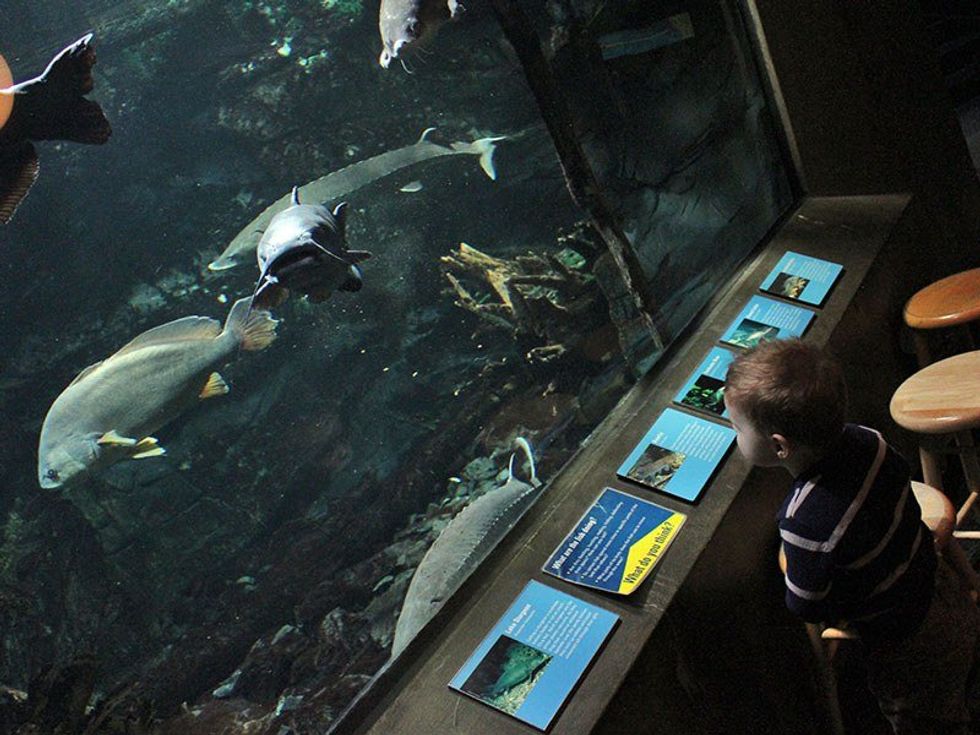It has become common rhetoric when discussing the United States education system the need to improve science, technology, engineering, and math (STEM) within classrooms. As stated in the Federal STEM Education 5-Year Strategic Plan (May 2013):
Advances in science, technology, engineering, and mathematics (STEM) have long been central to our Nation’s ability to manufacture better and smarter products, improve health care, develop cleaner and more efficient domestic energy sources, preserve the environment, safeguard national security, and grow the economy… Thus it is essential that the United States enhance U.S. students’ engagement in STEM disciplines and inspire and equip many more students to excel in STEM.
From a policy point of view, fostering science, and all areas of STEM, in the United States, centers around creating a more rigorous and engaged classroom. However, even the U.S. Department of Education admits much of our lives are spent outside of the classroom, stating “Because we know that learning happens everywhere—both inside and outside of formal school settings—the Department’s 21st Century Community Learning Centers program is collaborating with NASA, the National Park Service, and the Institute of Museum and Library Services…” Learning is a constant force throughout our lives. Through all of our experiences, we intake information, which can help us grow as individuals. The work of libraries, museums, and even online videos can help direct this learning, helping individuals discover subjects truly excite them, and allow them engage and potentially deeper into the matter.
At its base, science is about curiosity. All of science starts with a question, a hypothesis, and we work to explore and understand. This fundamental curiosity allows for great opportunity for learning outside the classroom. While classrooms may seem intimidating, or textbooks dull and uninteresting, science museums can offer a more experiential method of learning, creating memories that can translate into lessons. At the Boston Science Museum in Boston, Massachusetts, the “Physics in the Park” exhibit allows traditional playground activities, such as swings and carousels, while teaching the basics of classical mechanics. While the lessons might not be apparent at first, it gives visitors a sense of physics at work, and shows that these universal laws are always in play, regardless of if we acknowledge them. Understanding the changes in kinetic and potential energy of a swing can lead to questions, like why does a box in the backseat of a car slide when the car turns, or how does walking work? It fosters that sense of curiosity. The fun of playing in a playground creates a memory, while the description of physics for each of the activities allows for greater understanding that can lead to curiosity about things previously just accepted. In time, this creates a love and engagement in physics, and science in general, that feeds upon itself.
As a volunteer at the ECHO Science Center in Burlington, Vermont, my goal with visitors is to “educate and delight.” Though I have not measured it, I estimate I spend about five minutes talking with a visitor. A large portion of my time volunteering is running ECHO’s sea tank, a salt water tank holding a variety of sea creatures such as sea stars, hermit crabs, and anemones. The sea tank is meant to represent what life was like in the area 13,000 years ago when glaciers pressed down the land allowing for the Atlantic Ocean to flood in and create the Champlain Sea. In the approximate five minutes I have to keep a visitors attention, I cannot give them complete, detailed lesson on how the ice age shaped the land of northeastern United States, nor go over the full life cycle of each creature in the tank. But I can talk to them about the animals we have. I can explain why fossils of sea life can be found in Lake Champlain, even though the lake is fresh water. I can explain that the little hermit crabs are not babies, but rather a different type of hermit crab than our larger ones. If I can keep the visitors engaged, keep them around for maybe ten minutes, then I can explain to them how a sea star eats by pushing its stomach out its mouth, or how a sea stars and sea urchins are cousins. While the goal to educate may seem more important than our goal to delight, the two truly go hand in hand. When visitors are having fun, they are more willing to listen to what I, other volunteers, or staff members have to say, and when they are listening, they are learning.
While I found science museums to not have all the information, my personal experience has found they present topics in a lot more approachable and exciting way, and sometimes even teaching me ideas I would not learn until higher grades. The fun and excitement of visiting a science museum leads to more exploration, more questions to teachers, or even pursuit of higher academic degrees. In pursuing better STEM education, it is important to create a better classroom. But classroom is not the only, or even arguably the most important, area for learning. The joy of visiting a science museum can help greater foster a love of education, which can help greater engagement and active learning throughout a person’s life.





















